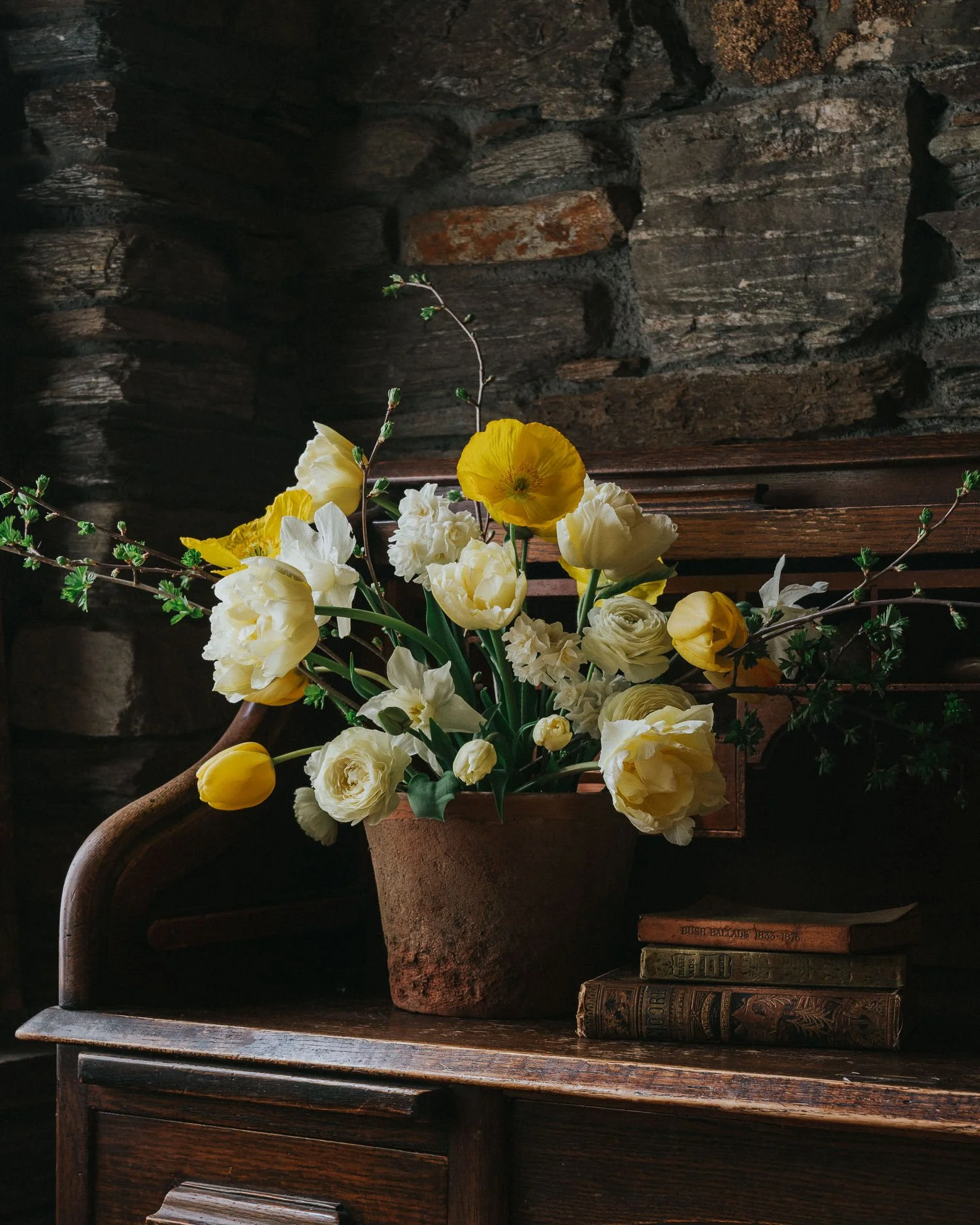The best early spring flowers
A band of gaudy daffodils, shockingly yellow and bright after a dull, muted winter, stand tall throughout the garden. A colour that I wouldn’t choose for my garden, but we are on borrowed land and they were here before us and so they stay. And yet despite this, yellow is a colour that heralds the start of spring and does feel quite right at this time of year. The colour of new beginnings, of energy flowing back through the veins of life. Many of the spring blooms do come in vibrant shades of blue, yellow and orange so that they can attract the few pollinators that are brave enough to be out and about.
Here are a selection of some of the earliest to flower perennials that are easy to care for and will reward you year after year.
The best early spring Flowers for the garden:
Hellebore - are the first perennial flowers to appear in my garden in late winter - their generous flowers make them an especially welcome sight at that time of year. They come in the most gorgeous range of sultry colours from whites, greens to smoky pink all the way through to deep, almost black, purples. They thrive in shaded and woodland gardens (preferring well-drained soil) which makes them such a useful plant as well as being so incredibly beautiful.
They make a fabulous cut flower, however it is best to wait until the flowers are well developed and the stamens begin to drop to ensure long lasting blooms, otherwise they will droop on the same day you pick them. I also always submerse the bottom 2cms of the cut stems into freshly boiled water for about 15 seconds.
Snowdrops - burst into life at the same time as the hellebores and also thrive in shaded, woodland gardens, which make them a wonderful plant to interplant with the hellebores. Their delicate, nodding pure white flowers are often thought to symbolise hope and new beginnings as they appear when the rest of the garden feels like it is still in a deep sleep.
Frittilaria Snakeshead - one of my favourite flowers of all. Incredibly unique & elegant, they have lovely bell shaped flowers with a distinctive chequered pattern that hang delicately on fine stems. Very hardy, they are easily pleased and are happy to grow in either the sun or partial shade as long as they have free draining soil.
Trillium - are a unique perennial that are easily recognisable for their distinctive three-petaled flowers, that are surrounded with 3 broad leaves. The flowers come in various colours, including white, pink, and a rich magenta red. Trilliums are slow-growing and can take awhile to get going but can live for many years. They are a special plant that look amazing interplanted with the frittilaria above.
Erythronium - commonly known as ‘dog's tooth violet’ or ‘fawn lily’, have the loveliest, dainty flowers that float above lush leaves that are mottled with dark spots. They are another wonderful spring plant that also thrive in woodland gardens. Spring is the most wonderful time for woodland gardens!
Tulips - the iconic spring flower! They have gorgeous, elegant, cup-shaped flowers that come in the most amazing array of colours; from the softest pastels right through to the darkest rich, painterly tones. Look for varieties that are reliably perennial as many of them fizzle out after a couple of seasons. Flowering more towards mid spring they make both the perfect addition to the spring garden or vase.
Crocus - have sweet little cup-shaped flowers that appear in late winter and early spring. They come in a beautiful range of vibrant colours, including purple, yellow, and white and I was surprised to learn that they belong to the iris family. Although upon looking at my photos I noticed that they have very similar delicate strappy leaves to those of the iris reticulata.
Daffodils - are the quintessential vibrant spring flower that I think most people could name! Their bright yellow petals with distinctive trumpets shapes are most commonly seen however there are now many different lovely white and softer yellow ones available. One of the earliest to bloom, they are very hardy and naturalise readily which make them a wonderful easy addition to the garden.
Muscari - commonly known as grape hyacinth or matchsticks, are tiny bulbs that produce clusters of tiny flowers, most commonly in shades of blue, that look like little bunches of grapes, hence the name grape hyacinth. They actually have a really gorgeous sweet scent that you may have not noticed before as they grow so low to the ground! I think that they look especially good planted under trees and in the more wild parts of your garden and they naturalise very well.
Iris Reticulata - tiny little dwarf iris that have a lot of the similar patterns that you would find on other iris varieties. Blink and they will be gone but they are absolutely still worth it. As with many other irises, they love well drained soil and lots of sun but the reticulatas can also take partial shade if need be.
Woodland Anenome - as the name would suggest are usually found in woodlands and when thriving will create beautiful little clouds smothered in small star shaped flowers.










